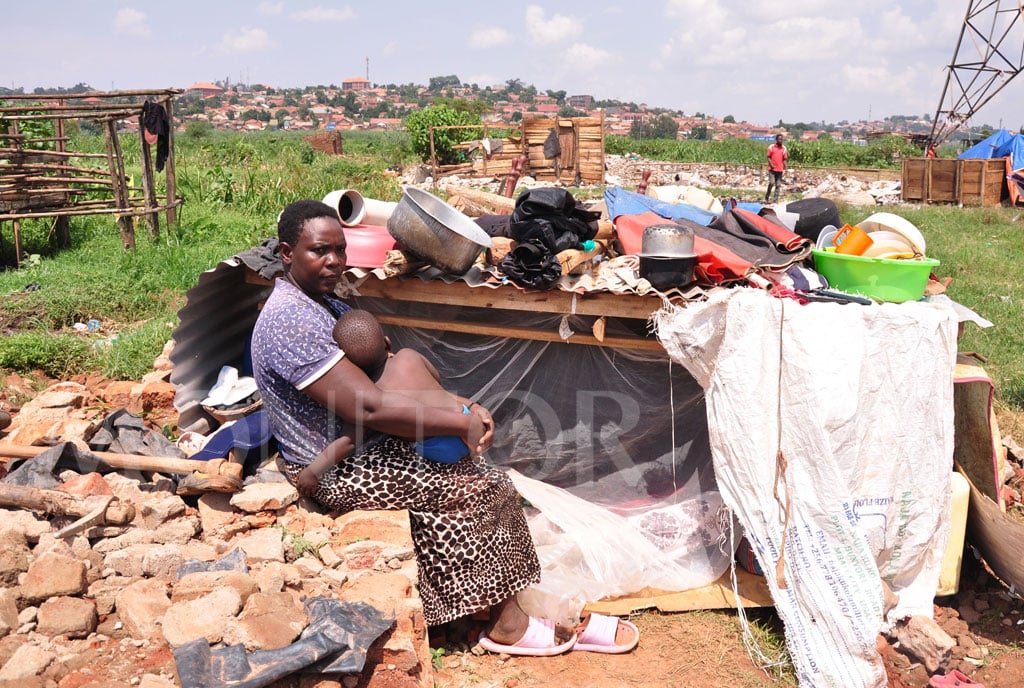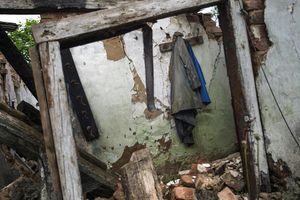
Musaazi Namiti
Some very distressing images and videos of homes destroyed by the National Environment Management Authority (Nema) have been everywhere they can be found: on social media, on TV screens and in newspapers.
In one video posted on the website of this newspaper, a woman named Rose Namuddu, who appears to be in her 60s or 70s, is seen sifting through piles of rubble that only a few weeks ago was a home in which she had lived for decades.
“I had a home,” she says. “Now this is all that is left,” she adds while pointing to a heap of bricks that made walls of her destroyed home.
She has since improvised and piled the bricks to create something like a room where she sleeps. An old tarpaulin serves as a roof to shield her from rain and the cold.
It is a scene of utter destruction. Nema razed Ms Namuddu’s home and many others to the ground. And what is Ms Namuddu’s crime? She built her home in a wetland in Lubigi near Kampala.
It is hard to acquire a home, even for people who live in high-income countries, so you can imagine how challenging it will be for an elderly woman living from hand to mouth to get a new home.
In the video, Ms Namuddu says she built her house way back in 1995, the same year that Nema began life.
In demolishing homes built in wetlands, Nema will argue that it is fulfilling its mandate of protecting the environment. Those apportioning blame will say that Ms Namuddu and others whose homes have been demolished have only themselves to blame because they are not supposed to build in wetlands.
But it is hard to blame Ms Namuddu and others without blaming Nema. Here are four reasons why Nema is part of the problem in wetlands.
First off, Nema knows or should know all wetlands in and near urban areas that are at risk of being encroached on. It should have a wetland monitoring team that ensures no structure is built in wetlands. That people constructed homes in Lubigi and lived in those homes with Nema’s knowledge means Nema is not up to the job. In fact, more homes are being built in a wetland near Kawuku, and Nema has not done anything yet.
Second, many uneducated or illiterate/semi-literate people do not know that wetlands need to be protected to conserve the environment. They do not even know what Nema means. It is Nema’s responsibility to run public information campaigns and raise awareness of the need to protect wetlands.
Three, Nema has failed to explain to the public the difference between a wetland that is fully protected, a wetland that is partially protected and a wetland that is subject to conservation by the local community, as stated in the National Environment Act.
People do not know that some structures in wetlands are legal. This has created confusion because while some buildings and homes are pulled down, others are left intact.
Four, Nema should have given encroachers on wetlands a chance to remove roofing materials and bricks without damaging them with excavators. The decision to demolish homes was heartless. People now have to look for money to build new homes, but this is easier said than done.
Nema needs to go back to the drawing board and map out a wetlands management strategy. There would be no homes in wetlands to demolish, not tears and anger, if Nema did not allow any home to be built in the first place.
Mr Namiti is a journalist and former Al Jazeera digital editor in charge of the Africa desk
[email protected] @kazbuk




